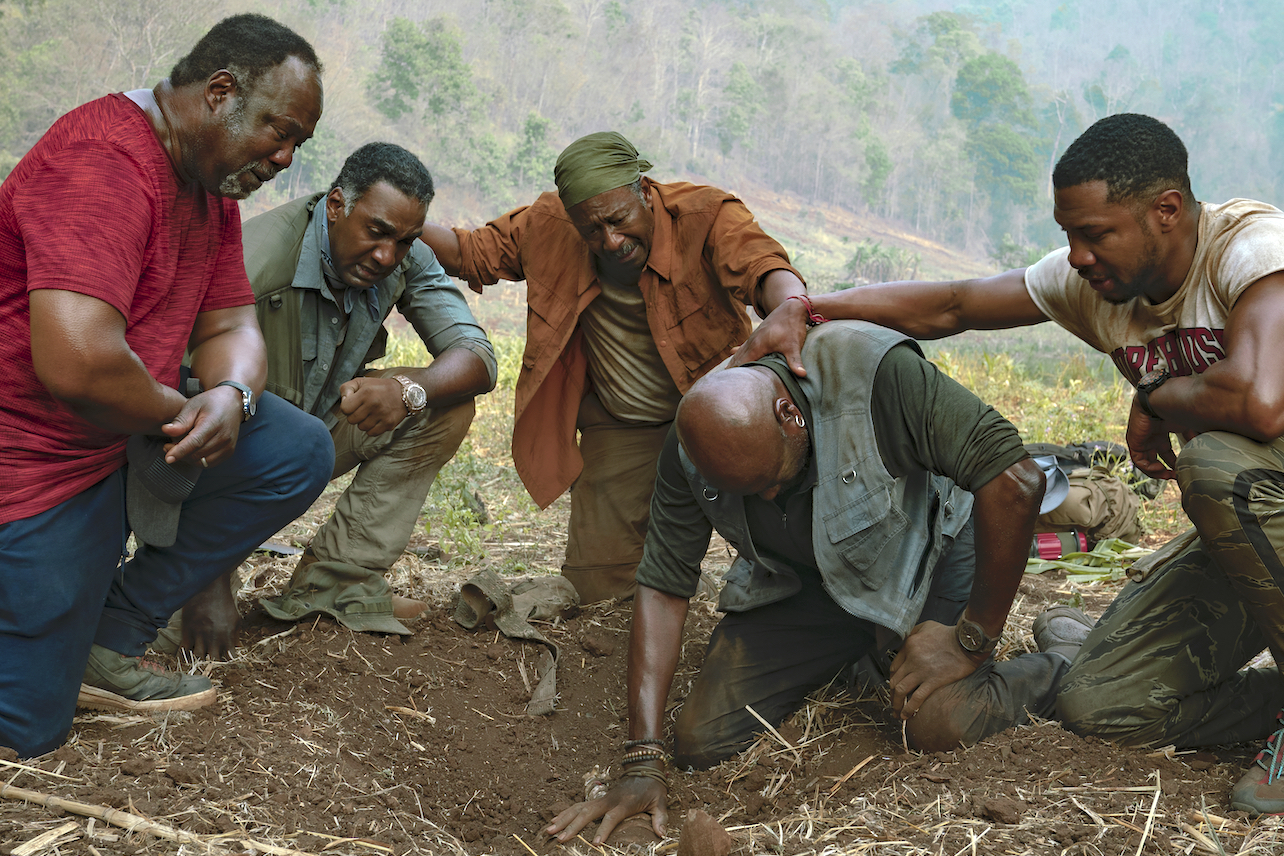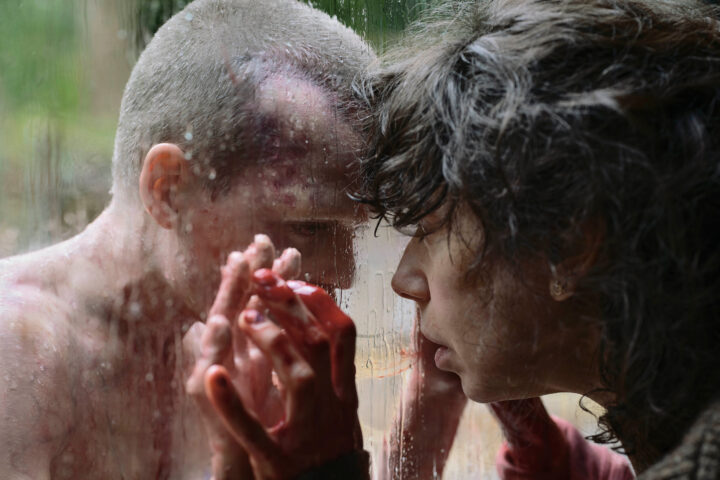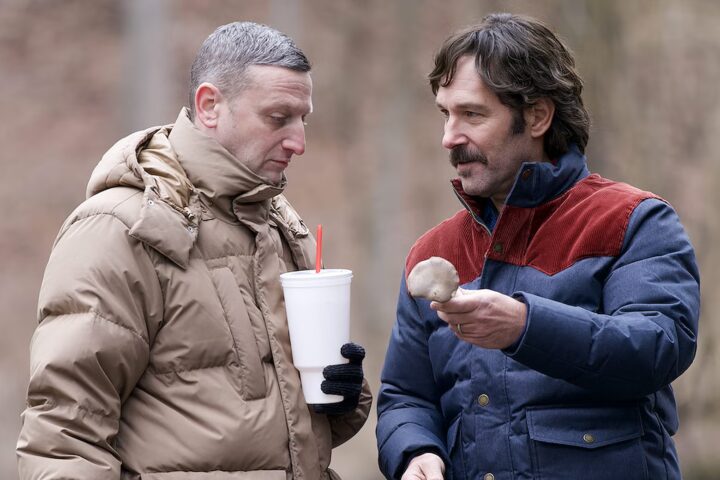What has happened to American film directors today? Where are the sociopolitical critiques? The inquiries into government? Observations on the culture wars tearing at our seams? The balls to make a movie actually about the times in which we live?
Make way for Spike Lee, cutting a mean, clean line directly through a youth-obsessed industry where mainstream blockbusters have been, for our own good, temporarily sidelined. With his new picture Da 5 Bloods and his last, 2018’s BlacKkKlansman (for which he won his first competitive Oscar), Lee is as a potent, agitated and provocative as he’s been since his 1989 international hit Do the Right Thing. Thank God someone is.
Lee, perhaps the most thematically daring American filmmaker of the last quarter century, is nearly the only narrative filmmaker today using the medium to explore our current state of affairs, in his last two pictures unapologetically training his laser-focused lens on the person sitting comfortably atop the chain of “very fine people” doing very bad things.
The best movie ever made about urban racism, microcosmic Do the Right Thing found tensions flared, and stoked, on the hottest day of the summer in Bedford-Stuyvesant, a small community navigating writ large American issues at the intersection of race, cultural disconnect and police brutality. That landmark picture feels as timely today as it did in 1989, likely more a comment on us than on the film’s zeitgeist, which was, and remains, considerable.
Da 5 Bloods, a Netflix film with an intended theatrical run and now available to stream, is perhaps his most serendipitously timely movie given the current cultural tumult over racism and police brutality in polarized America. In BlacKkKlansman, Lee concluded with an incendiary, frightening coda of Charlottesville newsreel footage, a prophetic precursor to where we (still) are only two years later. Da 5 Bloods, while not specifically about the experience of being Black on the streets of America, is no less about racial injustice in its story of four lifelong friends and disenfranchised Vietnam vets reuniting in modern-day Ho Chi Minh City for both a reckoning and a treasure hunt.
In an epic, sometimes ungainly and often affecting travelogue into memory and guilt, Lee delivers a film fusing several plot threads and themes—PTSD, survivor’s guilt, secrets of the past, buried riches, familial disconnects and, excitingly, a wildly provocative notion about the Vietnam conflict revived and fought anew on the same, hallowed ground, nearly 50 years on.
That it gets away with so much is a testament to Lee’s filmmaking prowess taking important themes of overlooked Black contributions to American history and somehow shoehorning them into Hollywood escapist constructs heavily inspired by both The Treasure of Sierra Madre and The Bridge on the River Kwai, with a healthy dose of Apocalypse Now’s Colonel Kurtz towering over nearly everything.
Picture opens on the celebratory reunion in Ho Chi Minh City, all brotherhood and light as the quartet drink, reminisce, talk politics and shared history. Paul (Delroy Lindo), the defacto leader and most damaged, nurses PTSD and a lifetime of deep seated issues that have somehow turned him, to the chiding of his friends, into a Trump supporting, MAGA hat-wearing conservative, allowing Lee to sling many a potent arrow at “President Bone Spurs.”
The Wire’s Clarke Peters is Otis, the designated planner in the group, Norm Lewis is Eddie, a formerly successful businessman on the skids and Isiah Whitlock Jr. their former squad medic. Otis has unfinished business with an old girlfriend, Tiên (Lê Y Lan), who surprises him with an adult daughter. This is all fine as it goes, but perhaps because Paul’s torments as rendered by Lindo have such protean force, the other three characters feel somewhat hazy.
The fifth, not at the reunion, is their fallen brother and squad leader “Stormin’” Norman (Chadwick Boesman, terrific), the natural born leader who saved their skins back in the day but who perished in combat and is only seen in flashback as remembered by the others, whom Lee boldly inserts into memory footage at their present age, a strategic choice suggesting the retracing of memory from a late-life vantage point. Paul, in particular, has been haunted by these memories most of his life, nightly visions of guilt.
The practical reason the group is back in action, and chief driver of the plot, however, a buried storage locker of wealth lost in battle after a CIA plan crash. A cadre of solid gold bars, intended as payment from the United States for the Vietnamese who fought against the Vietcong, was found by the group then lost in the fog of war, and now they’ve returned to claim it. Once more into the breach, indeed.
Once the group returns to the jungle Lee shifts into Sierra Madre mode and introduces a key, additional character, Paul’s son David, beautifully played by Jonathan Majors (The Last Black Man in San Francisco), a real force. David, a Morehouse alum and African-American studies teacher, has a dysfunctional relationship with his old man, and the push-pull between Lindo and Majors is one of the picture’s dramatic strongholds.
But back to the plot. The gold is found easily enough (actually, far too easily), but the emergence of a Vietnamese faction also in pursuit of the treasure drives a daring conversation about reparations – personal ones, responsibility to Black Americans and also the Vietnamese, who want what they feel is owed.
With enough material for three movies, Lee also includes a version of Hanoi Hannah, the Vietnamese radio announcer who made English broadcasts directed to Black soldiers challenging political ideologies in a moment when the men still didn’t have civil rights at home, a terrific helicopter crash sequence and a wholly perfunctory trio of bomb landmine diffusion experts (including the gifted Paul Walter Hauser). And a playacting Jean Reno shows up as dirty French financier ready to help the group smuggle the gold back home, under the radar. In the final sequence, Lee even finds a way to weave in Black Lives Matter – talk about timely and relevant.
Revising an early script by Danny Bilson and Paul De Meo (Oliver Stone was once attached), Lee and writing partner Kevin Willmott ambitiously combine story, homage, character and history, beginning the film with newsreel footage of Muhammad Ali, Kent State and even a reference to the infamous Mỹ Lai Massacre. While these segments function as known history revisited for context, the uncovered and unknown portions – the disproportionate amount of Black American soldiers deployed to Vietnam and their contribution to history – are the film’s true raison d’être.
Delroy Lindo’s powerful portrait dominates the film from start to finish. Lindo, a Spike Lee alum so memorable in 1994’s Crooklyn, delivers a work of such haunted profundity and pain that when he comes uncorked in the film’s final reel, howling, alone, lost in a tangled jungle of his own demons, a madman unleashed in remarkable, three-minute monologue played directly to the camera, one can only think of “Shakespearean” to describe its King Lear-level, extravagant grandiloquence.
Da 5 Bloods is professionally mounted and shot with gloss in Thailand and Ho Chi Minh City locations by Newton Thomas Sigel in shifting aspect ratios of 2.35, 1.85 and 4:3 and, at times, 16mm stock, designed to depict different places and eras in the worlds of the tangible and memory. Lee also deploys a Marvin Gaye-driven soundtrack, the lyrics to What’s Going On? and multiple tracks from Gaye’s 11th studio album informing the story, said to have been critical to the actors during pre-production.
Some may find Da 5 Bloods an overlong, excessive journey to an action climax that is not all that exhilarating, and certainly the film could be accused of perhaps overplaying its emotional hand. But there is genuine feeling throughout, right up to its unabashedly melodramatic moment of forgiveness in a climactic clash of past and present.
Da 5 Bloods reaches, sprawls and delivers.
3 stars.



